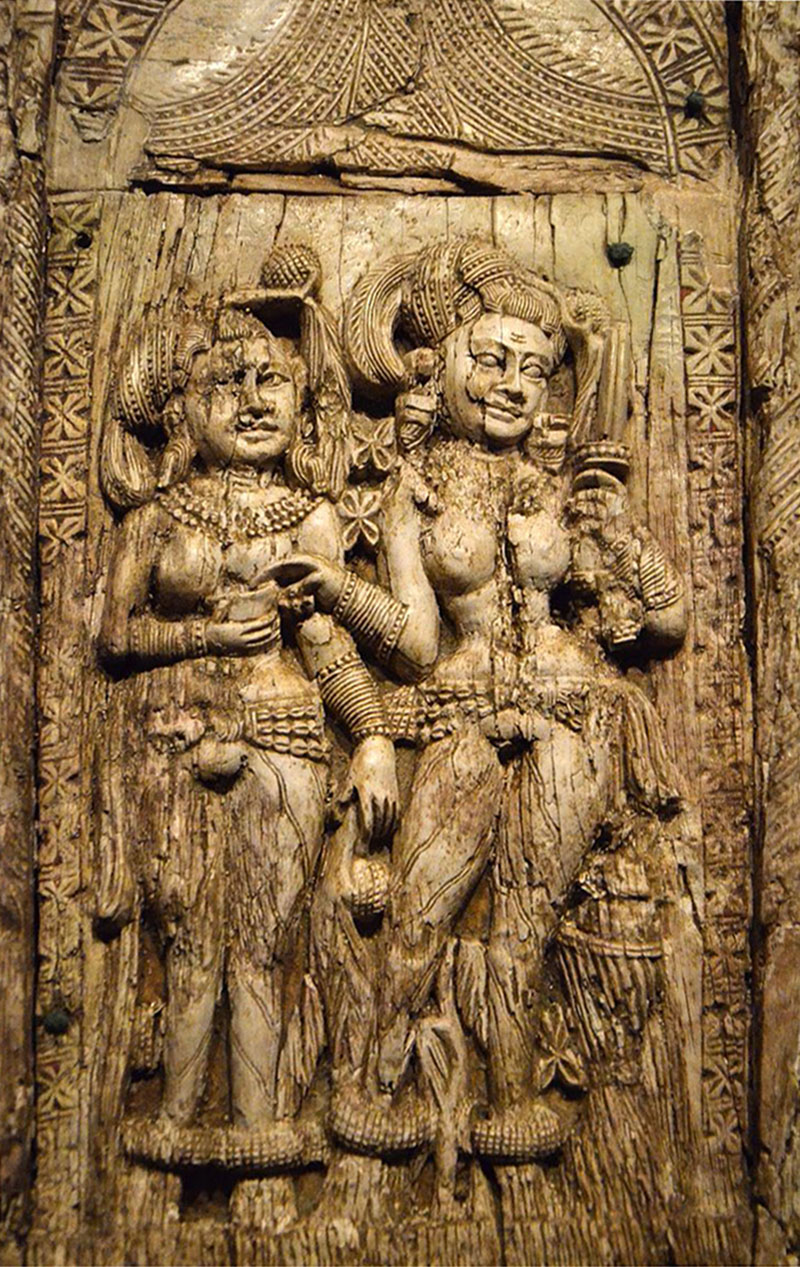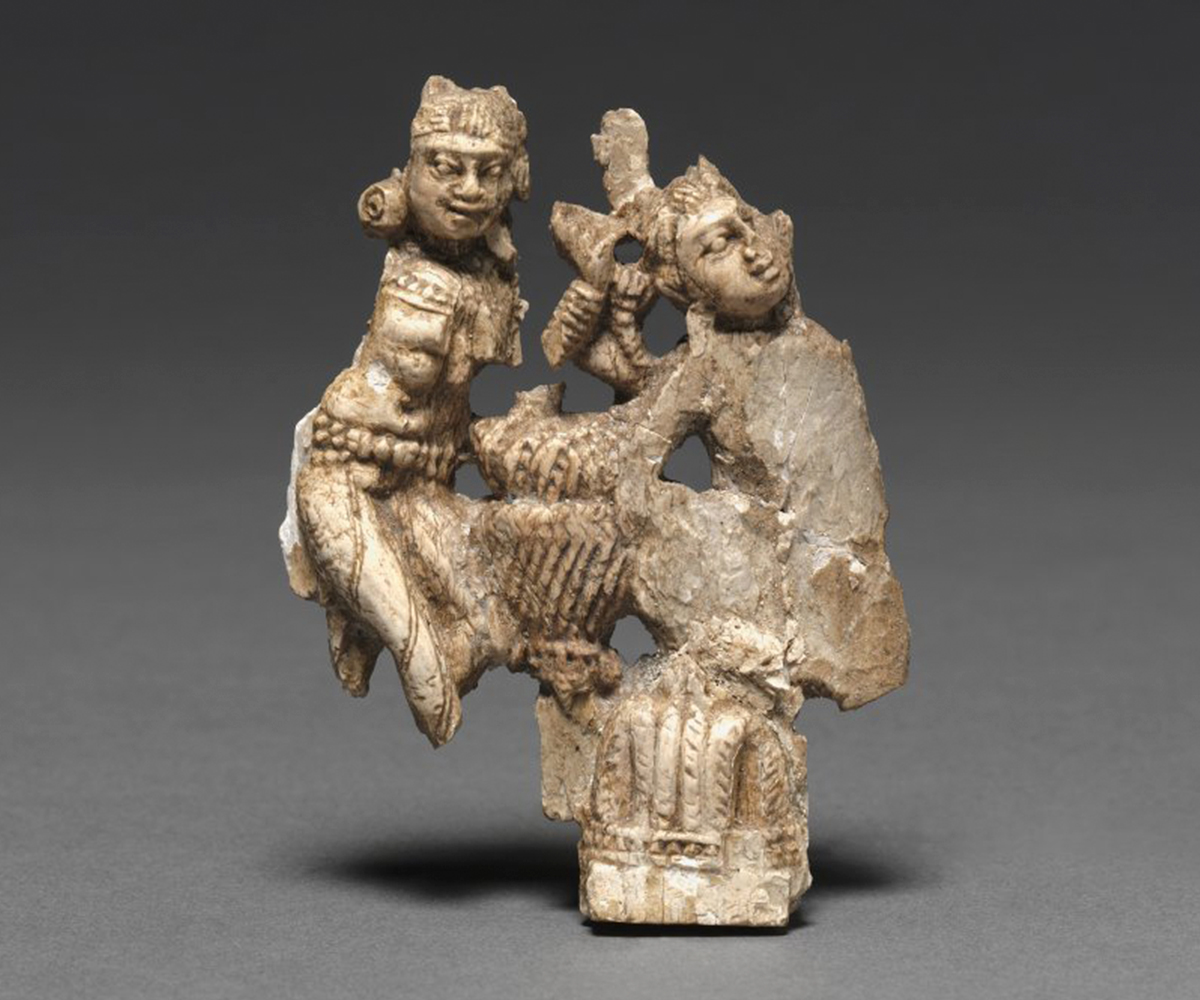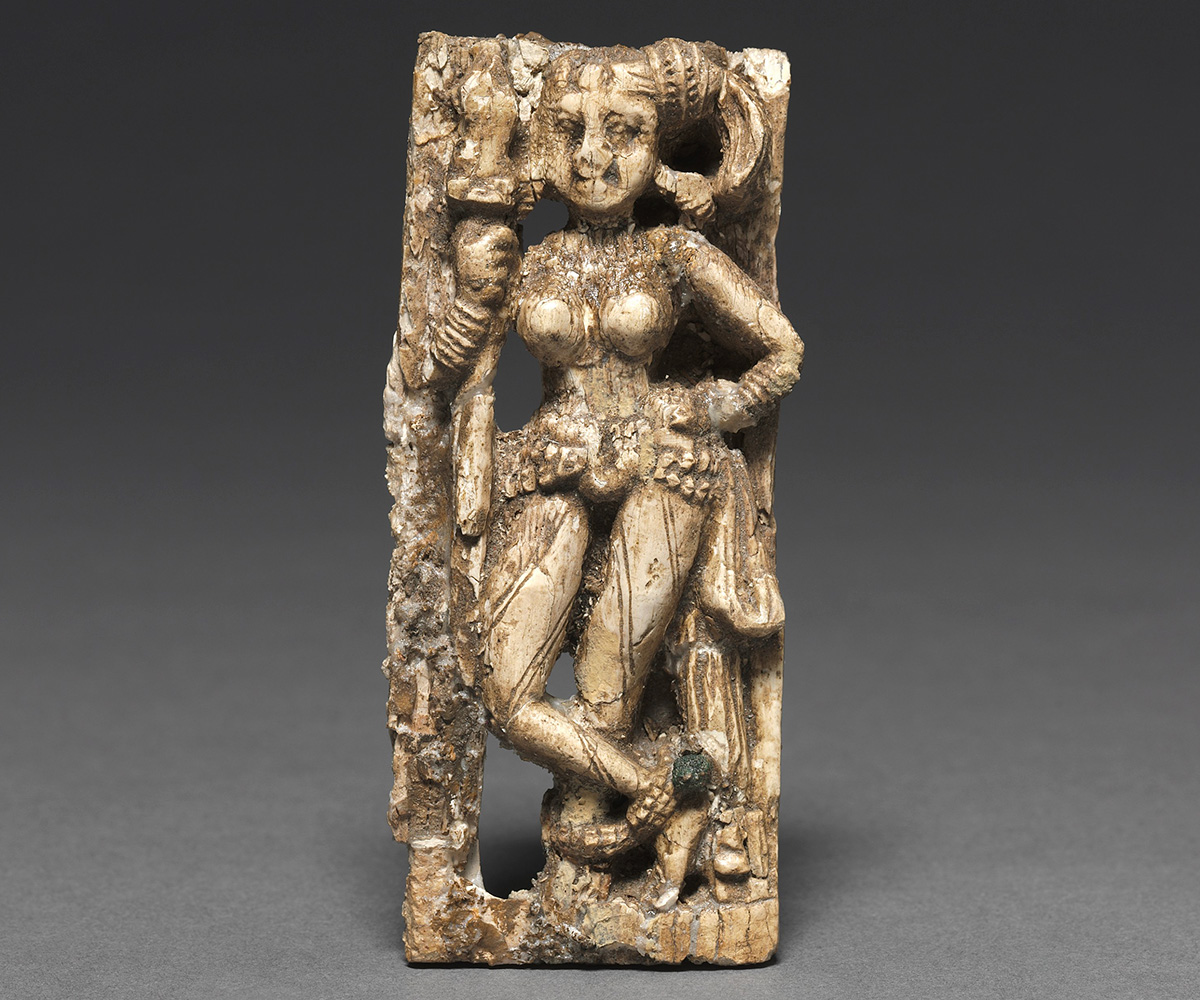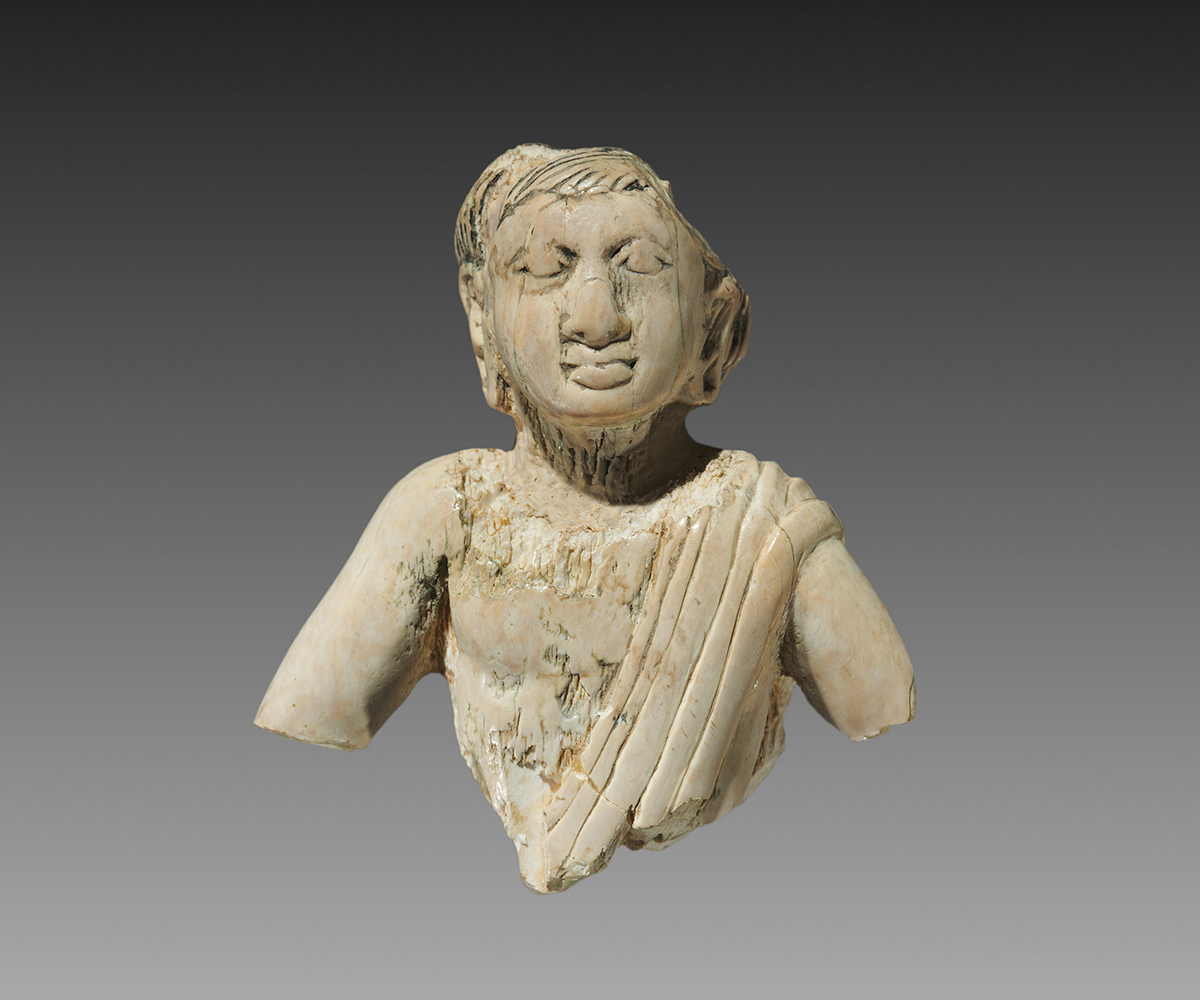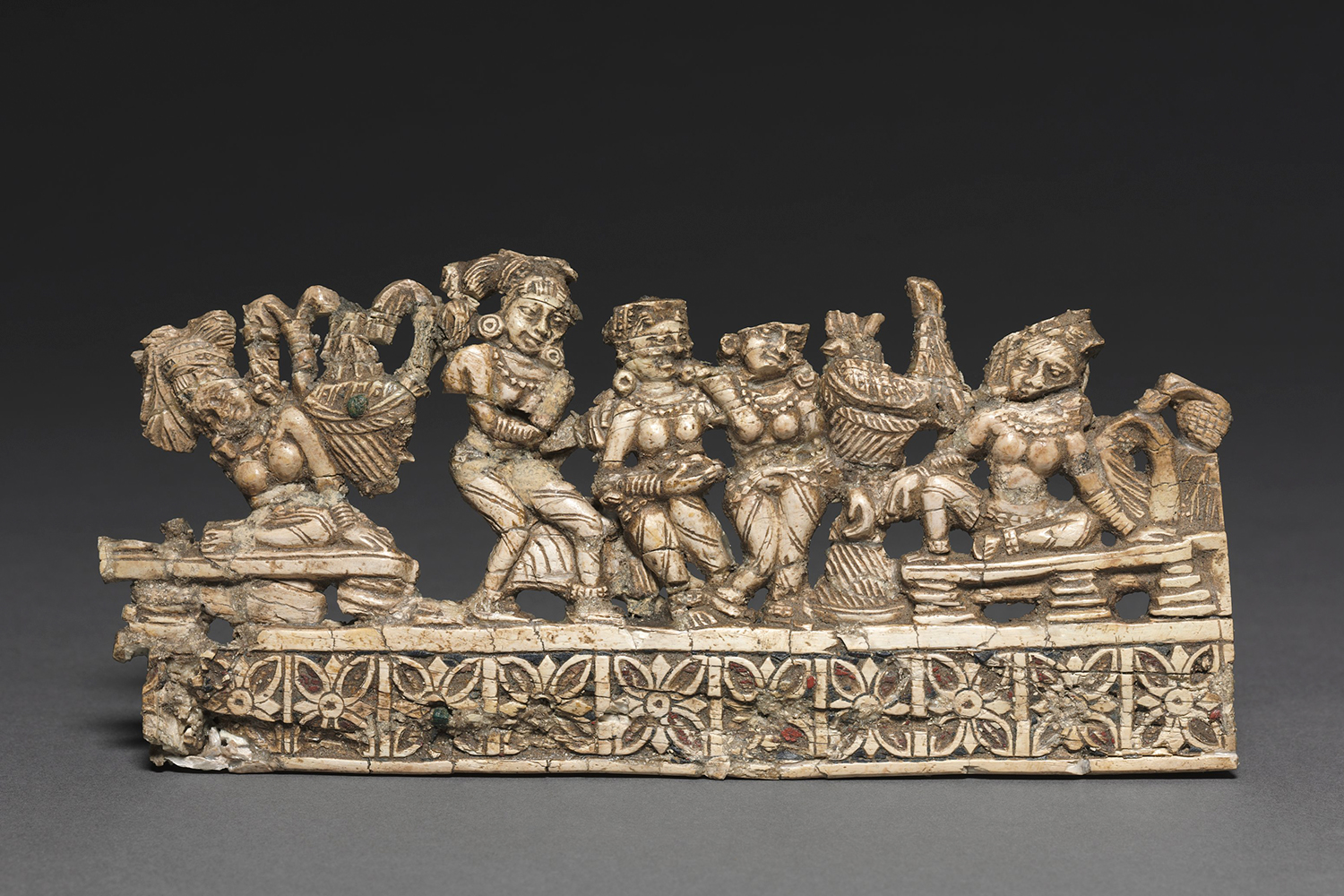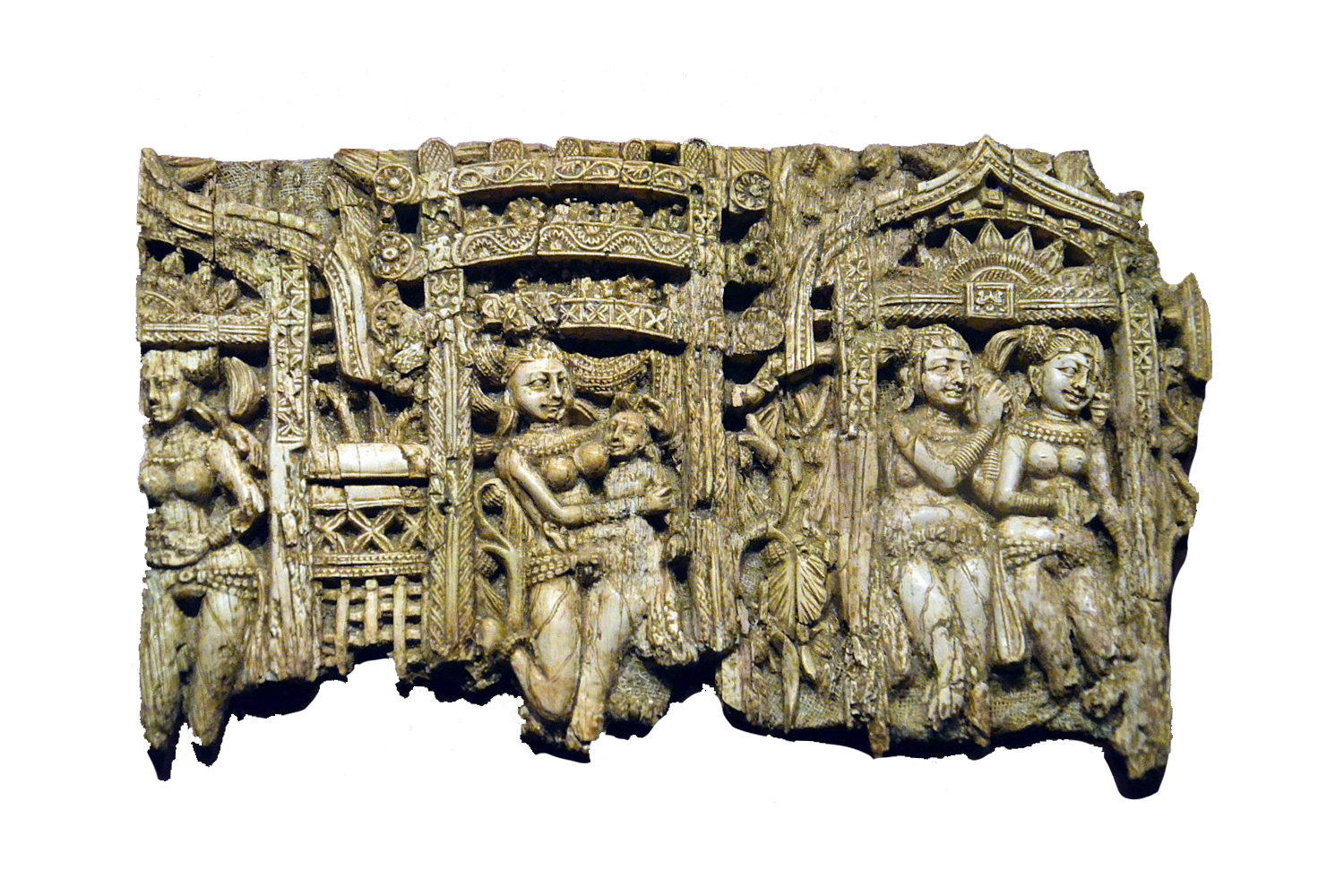ARTICLE
Begram Ivories
For most of the twentieth century, scholars believed that the Begram ivory statuettes were part of the royal treasury of the Kushan dynasty collected between the first and third centuries CE and concealed, in the rooms that they were eventually discovered in 1937–39, in order to protect them from the onslaught of the Persian Sasanian army in the mid-third century CE. However, recent archaeological evidence suggests that the ivories formed part of the vast range of commodities that were exchanged along the Silk Road and reached Begram from different Indic cultural hubs through a combination of land and sea networks. The scholars belonging to this school of thought have generally based their findings on stylistic comparisons between Begram ivories and the stone sculptures of the ancient Indian Buddhist monumental structures.
Scholar Sanjyot Mehendale suggests that the ivories were probably produced in local workshops by groups of itinerant ivory traders and craftspeople who were conversant with the many stylistic and iconographic conventions of ancient India. This argument is bolstered by the representational consistency of the Begram ivory plaques, almost all of which depict women framed by vegetal, mythological and architectural motifs and decorations. Mehendale also suggests that the comparisons between these portable ivory objects and the monumental stone arts of ancient India should be made with caution, as stylistic diffusion spreads more quickly through the exchange of smaller, mobile objects such as the ivories, than through the building of large, monumental works that are rooted in place.
Since their excavation, most of the Begram ivory statuettes have been housed in the National Museum of Afghanistan, Kabul. However, during the years of unrest following the outbreak of civil war in the country in 1992, many of these objects were lost, stolen and irreparably damaged. Despite these circumstances, many of these ivories have been identified, acquired and rehabilitated to their original context through the efforts of private individuals as well as institutions, such as the British Museum. The latter, through its exhibition Afghanistan: Crossroads of the Ancient World, also contributed to the scientific study of these objects. Aside from this, new publications such as Francine Tissot’s catalogue for the National Museum of Afghanistan, have aided scholarly analysis of Begram ivories through its inclusion of photographs as well as speculative illustrations of wooden furniture pieces within which these ivories were originally set. Thus, even though the debates around the antiquity and place of manufacture of the Begram ivory statuettes are far from settled, much useful scholarship has been added in recent years to the existing research which enriches our understanding of these stylistically complex historical objects.
Bibliography
Kabul, Muzih-ʼi. Afghanistan: Hidden Treasures from the National Museum, Kabul edited by Fredrik Talmage Hiebert and Pierre Cambon. United States: National Geographic Society, 2008.
Mehendale, Sanjyot. “The Begram Carvings: Itinerancy and the Problem of “Indian” Art.” In Afghanistan: Forging Civilizations along the Silk Road edited by Joan Aruz and Elisabetta Valtz Fino. London: Metropolitan Museum of Art, 2012.
Simpson, John. “The ‘Begram Ivories’: A Successful Case of Restitution of Some Antiquities Stolen from the National Museum of Afghanistan in Kabul.” International Journal of Cultural Property 23, no. 4 (2016): 459–77.
Stone, Elizabeth Rosen. “Some Begram Ivories and the South Indian Narrative Tradition: New Evidence.” Journal of Inner Asian Art and Archaeology 3 (2008): 45-59.




